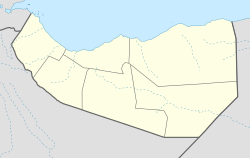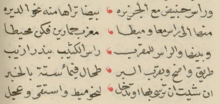
The Isaaq is a major Somali clan. It is one of the largest Somali clan families in the Horn of Africa, with a large and densely populated traditional territory.
The Habr Garhajis also contemporarily known as the Garhajis is a major clan of the wider Isaaq clan family. They are the traditional holders of the Isaaq Sultanate and Habr Yunis Sultanate since the 18th century. As descendants of Ismail bin Sheikh Isaaq, its members form a part of the Habar Magaadle confederation, and they constitute one of the largest sub-clans of the Isaaq. The Garhajis are divided into two major sub-clans: the Habr Yunis and Eidagale. They are traditionally nomadic pastoralists, merchants and skilled poets.

The history of Somaliland, a country in the eastern Horn of Africa bordered by the Gulf of Aden, and the East African land mass, begins with human habitation tens of thousands of years ago. It includes the civilizations of Punt, the Ottomans, and colonial influences from Europe and the Middle East.

The Awal, also contemporarily known as the Habr Awal, Subeer Awal, and alternately known as the Zubeyr Awal is one of the largest subclans of the wider Isaaq clan family, and is further divided into eight sub-clans of whom the two largest and most prominent are the Isamusa and Sa'ad Musa sub-clans. Its members form a part of the Habar Magadle confederation.
Abdirahman bin Isma'il al-Jabarti, also known as Daarood, Dawud or Da'ud, is the common ancestor of the Somali Darod clan and the Harla people. According to local tradition, Abdirahman descended from Aqil ibn Abi Talib, a member of the Banu Hashim and a cousin of the Islamic prophet Muhammad.
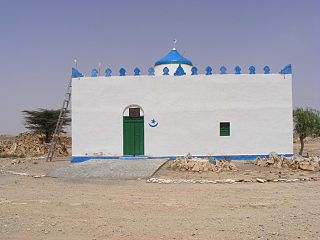
Haylan, is a town in the eastern Sanaag region of Somaliland.

Heis is a historic coastal town located in the Sanaag region of Somaliland. The town was important for trade and communication with the Somali interior and was used to export frankincense to Arabia.
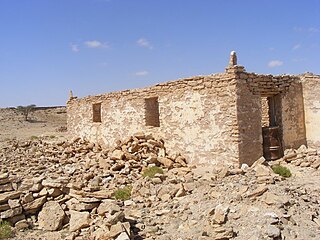
Qaʽableh is a town in the eastern Sanaag region of Somaliland. It is the site of numerous archaeological sites and ancient tombs.
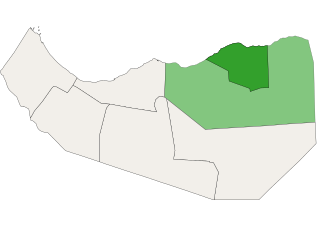
Erigavo District is a district in the central Sanaag region of Somaliland. It is the largest and most populous district in Sanaag. Its capital lies at Erigavo.
Tourism in Somaliland is regulated by Somaliland's Ministry of Tourism.

The Habr Je'lo, Arabic: هبر جعلو, Full Name: Mūsa ibn ash-Shaykh Isḥāq ibn Aḥmad, historically known as the Habr Toljaala is a major Northern Somali clan of the wider Isaaq family. Its members form the confederation along with the Ibran, Sanbuur and Tolje’lo.
Sharmarke Ali Saleh was a leading 19th century Somaliland leader, captain, and merchant. He was known as "The African Rothschild " which indicates he was one of the richest men living on the African continent at that time and also the 'Political Boss of the Somaliland coast', a title which is a testament to his political influence in the region. He was the governor and ruler of Zeila and Berbera between 1841 and 1861, and for a time was known as the richest man along the Somaliland coast. His descendants would go on to become the traditional leaders of the Musa Arreh sub-clan of the Habr Yunis clan.

Siyara was a historic coastal settlement and fort located in the Sahil region of Somaliland. It served as the first capital of the Adal Sultanate following the Muslim resurgence spearheaded by Sabr ad-Din II.
Ruguda, also known as Rakudah is a historic coastal port town located in the Sanaag region of Somaliland, near Heis.
The Musa Abokor is a Somali clan, and a 2 major sub-division of the muuse sh isxaaq clan of the Isaaq clan-family.

El-Darad was a historic coastal settlement and fort located in the Sahil region of Somaliland.

The Isaaq Sultanate was a Muslim sultanate that ruled parts of the Horn of Africa in the 18th and 19th centuries. The kingdom spanned the territories of the Isaaq clan in modern-day Somaliland. It was governed by the Rer Guled branch of the Garhajis clan and is the pre-colonial predecessor to the modern Republic of Somaliland.

Ishaaq bin Ahmed bin Muhammad, more commonly known as Sheikh Ishaaq or Sheikh Isaaq was an Islamic scholar that crossed the sea from Arabia to the Horn of Africa. He is regarded the Sayyid forefather of the Isaaq clan-family in the Horn of Africa, whose traditional territory is wide and densely populated.
The Sa'ad Musa or Saad Musa is a northern Somali clan. Its members form a part of the Subeer Awal sub-clan of the Isaaq clan family. The Sa'ad Musa traditionally consists of nomadic pastoralists, coastal people, merchants and farmers. The clan inhabits Somaliland, including Maroodi Jeex, and Sahil as well as Djibouti, the Somali Region of Ethiopia, Kenya and Tanzania.
The Sanbur is a major clan of the wider Isaaq clan family. Its members form part of the larger Habr Habusheed confederation along with the Habr Je'lo, Ibran and Tol Je'lo clans. Politically however, the Sanbur fall under the Habr Je'lo clan.




